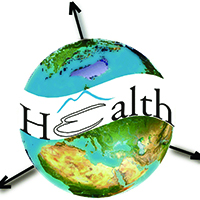Neighbourhood-level housing quality indices for health assessment in Dakar, Senegal

All claims expressed in this article are solely those of the authors and do not necessarily represent those of their affiliated organizations, or those of the publisher, the editors and the reviewers. Any product that may be evaluated in this article or claim that may be made by its manufacturer is not guaranteed or endorsed by the publisher.
Authors
In sub-Saharan African cities, the dearth of accurate and detailed data is a major problem in the study of health and socioeconomic changes driven by rapid urbanization. Data on both health determinants and health outcomes are often lacking or are of poor quality. Proxies associated with socioeconomic differences are needed to compensate the lack of data. One of the most straightforward proxies is housing quality, which is a multidimensional concept including characteristics of both the built and natural environments. In this work, we combined the 2013 census data with remotely sensed land cover and land use data at a very high resolution in order to develop an integrated housing quality-based typology of the neighbourhoods in Dakar, Senegal. Principal component analysis and hierarchical classification were used to derive neighbourhood housing quality indices and four neighbourhood profiles. Paired tests revealed significant variations in the censusderived mortality rates between profile 1, associated with the lowest housing quality, and the three other profiles. These findings demonstrate the importance of housing quality as an important health risk factor. From a public health perspective, it should be a useful contribution for geographically targeted planning health policies, at the neighbourhood spatial level, which is the most appropriate administrative level for interventions.
How to Cite
PAGEPress has chosen to apply the Creative Commons Attribution NonCommercial 4.0 International License (CC BY-NC 4.0) to all manuscripts to be published.













